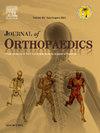Assessing the statistical fragility of randomized controlled trials in hip and knee arthroplasty: A methodological review
IF 1.5
Q3 ORTHOPEDICS
引用次数: 0
Abstract
Introduction
Randomized controlled trials (RCTs) are considered the gold standard in evidence-based medicine, providing high-quality evidence for the effectiveness of interventions in healthcare. However, the quality of RCTs can vary substantially. One aspect of methodological quality that has recently garnered interest is the fragility index (FI) which is a metric indicating how many event changes would lead to a change the significance of a study's results. Surgical RCTs, especially in orthopedic fields like hip and knee arthroplasty, have been shown to have high fragility, raising concerns about their reliability. This methodological study aims to describe the statistical fragility of RCTs in hip and knee arthroplasty over the past decade, with a secondary objective of determining the study characteristics associated with fragility.
Methods
We conducted a systematic search of Medline and Embase databases for RCTs published between 2012 and 2022, focusing on hip and knee arthroplasty. Trials were included if they had a 1:1 parallel design and reported at least one statistically significant outcome. FI were calculated for both dichotomous and continuous outcomes using established methods. We extracted data such as sample size, study characteristics, and statistical measures. Multivariable regression was used to explore relationships between FI and study characteristics such as sample size, intervention type, and region.
Results
From 16,214 records, 140 studies met the inclusion criteria. The median FI for dichotomous outcomes was 2, interquartile range (IQR) = 4, while the median continuous FI (CFI) was 8.85 (IQR 14.4), indicating higher robustness for continuous outcomes. No significant associations were found between FI and variables like region, year of publication, or sample size.
Conclusions
Hip and knee arthroplasty trials often exhibit statistical fragility, particularly those reporting dichotomous outcomes. These fragile findings suggest the need for more robust RCT designs in orthopedic research. Incorporating FI into sample size calculations could improve trial stability and ensure more reliable outcomes that better inform clinical guidelines and patient care.
评估髋关节和膝关节置换术随机对照试验的统计脆弱性:方法学回顾
随机对照试验(RCTs)被认为是循证医学的黄金标准,为医疗保健干预措施的有效性提供了高质量的证据。然而,随机对照试验的质量差异很大。方法学质量的一个方面最近引起了人们的兴趣,那就是脆弱性指数(FI),它是一个指标,表明有多少事件变化会导致研究结果的重要性发生变化。外科随机对照试验,特别是在髋关节和膝关节置换术等骨科领域,已被证明具有高度脆弱性,引起了对其可靠性的担忧。本方法学研究旨在描述过去十年髋关节和膝关节置换术中随机对照试验的统计脆弱性,其次要目标是确定与脆弱性相关的研究特征。方法系统检索Medline和Embase数据库中2012 - 2022年间发表的随机对照试验,重点是髋关节和膝关节置换术。如果试验采用1:1平行设计,并报告了至少一个具有统计学意义的结果,则纳入试验。使用既定方法计算二分类和连续结果的FI。我们提取了样本大小、研究特征和统计测量等数据。采用多变量回归探讨FI与样本量、干预类型和地区等研究特征之间的关系。结果16214份文献中,140项研究符合纳入标准。二分类结果的中位FI为2,四分位间距(IQR) = 4,而连续结果的中位FI (CFI)为8.85 (IQR为14.4),表明连续结果具有较高的稳健性。FI与地区、发表年份或样本量等变量之间无显著关联。结论:膝关节置换术的临床试验往往表现出统计学上的脆弱性,特别是那些报告两种结果的试验。这些脆弱的发现提示在骨科研究中需要更可靠的随机对照试验设计。将FI纳入样本量计算可以提高试验稳定性,确保更可靠的结果,从而更好地为临床指南和患者护理提供信息。
本文章由计算机程序翻译,如有差异,请以英文原文为准。
求助全文
约1分钟内获得全文
求助全文
来源期刊

Journal of orthopaedics
ORTHOPEDICS-
CiteScore
3.50
自引率
6.70%
发文量
202
审稿时长
56 days
期刊介绍:
Journal of Orthopaedics aims to be a leading journal in orthopaedics and contribute towards the improvement of quality of orthopedic health care. The journal publishes original research work and review articles related to different aspects of orthopaedics including Arthroplasty, Arthroscopy, Sports Medicine, Trauma, Spine and Spinal deformities, Pediatric orthopaedics, limb reconstruction procedures, hand surgery, and orthopaedic oncology. It also publishes articles on continuing education, health-related information, case reports and letters to the editor. It is requested to note that the journal has an international readership and all submissions should be aimed at specifying something about the setting in which the work was conducted. Authors must also provide any specific reasons for the research and also provide an elaborate description of the results.
 求助内容:
求助内容: 应助结果提醒方式:
应助结果提醒方式:


